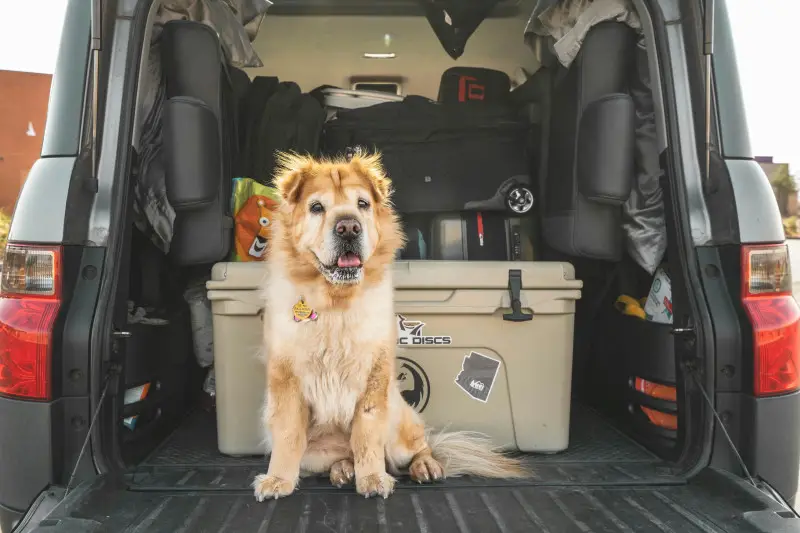Traveling can be an exciting adventure, but for pet owners, it often comes with the added challenge of ensuring their furry friends are well taken care of in their absence. The question of where to leave pets during travel is a common concern, and finding the right solution is crucial for both the pet’s well-being and the owner’s peace of mind. Choosing the right pet care solution is essential, as it directly impacts the comfort and safety of the pet. Whether it’s a short weekend getaway or an extended vacation, pet owners need to consider various factors such as the pet’s temperament, health needs, and the level of care required. The goal is to find a reliable and trustworthy option that ensures the pet remains happy and healthy while the owner is away. There are several common pet care options available for travelers. These range from professional pet boarding facilities to in-home pet sitters, and even pet-friendly hotels for those who prefer to bring their pets along. Each option has its own set of advantages and considerations, making it important for pet owners to evaluate what works best for their specific situation. For those who prefer to keep their pets close, pet-friendly hotels and vacation rentals offer a convenient solution. These accommodations are designed to cater to the needs of pets, providing amenities such as pet beds, feeding stations, and designated play areas. Traveling with pets can be a rewarding experience, but it also requires careful planning and preparation to ensure a smooth journey. For more information on the pros and cons of traveling with pets, you can visit our detailed guide on Pet travel. On the other hand, professional pet boarding facilities provide a structured environment where pets can receive round-the-clock care. These facilities often offer various services, including grooming, exercise, and socialization with other pets. In-home pet sitters, meanwhile, offer a more personalized approach, allowing pets to stay in the comfort of their own home while receiving one-on-one attention. Understanding the different pet care options and their benefits can help pet owners make an informed decision, ensuring their pets are well cared for during their travels.
Table of Contents
Boarding Kennels and Pet Hotels

Types of Facilities
When it comes to boarding kennels and pet hotels, pet owners have a variety of options to choose from, each offering different levels of care and amenities. Understanding the types of facilities available can help in making an informed decision.
Traditional Kennels
Traditional kennels are the most common type of boarding facility. They typically offer basic accommodations such as individual cages or runs, regular feeding schedules, and daily exercise. These facilities are often more affordable and provide a safe environment for pets. However, the level of personalized attention may vary, and the environment can be more stressful for pets not accustomed to being around other animals.
Luxury Pet Hotels
For those seeking a more upscale experience for their pets, luxury pet hotels offer a range of premium services and amenities. These facilities often feature spacious suites, comfortable bedding, and even entertainment options like TV and music. Additional services such as grooming, spa treatments, and personalized playtime are also available. Luxury pet hotels aim to provide a home-like environment, reducing stress and ensuring pets are pampered during their stay.
Care Features and Amenities
Both traditional kennels and luxury pet hotels offer various care features and amenities designed to keep pets comfortable and happy. Common amenities include climate-controlled environments, regular feeding and exercise schedules, and socialization opportunities with other pets. Some facilities also offer specialized care for pets with medical needs, ensuring they receive the necessary attention and medication.
Pros and Cons
Choosing the right boarding facility involves weighing the pros and cons to determine what best suits the pet’s needs and the owner’s preferences.
Professional Care
One of the main advantages of boarding kennels and pet hotels is the professional care provided. Staff members are trained to handle various aspects of pet care, from feeding and exercise to administering medication. This ensures that pets receive consistent and reliable care throughout their stay.
Socialization Opportunities
Boarding facilities often provide opportunities for pets to socialize with other animals. This can be beneficial for pets that enjoy interaction and playtime with their peers. Socialization can help reduce anxiety and boredom, making the stay more enjoyable for the pet.
Potential Stress for Pets
Despite the benefits, boarding facilities can be stressful for some pets, especially those not used to being away from home or around other animals. The unfamiliar environment, sounds, and smells can cause anxiety, leading to behavioral changes. It’s important to consider the pet’s temperament and comfort level when choosing a boarding option.
Selection Tips
Selecting the right boarding facility requires careful consideration and research. Here are some tips to help make the best choice.
Research and Reviews
Start by researching different boarding facilities in your area. Look for reviews and testimonials from other pet owners to get an idea of the quality of care provided. Online platforms and social media can be valuable resources for finding honest feedback and recommendations.
Facility Tours
Visiting the facility in person is an essential step in the selection process. A tour allows you to see the environment, meet the staff, and observe how pets are cared for. Pay attention to cleanliness, safety measures, and the overall atmosphere. A reputable facility will be transparent and willing to answer any questions you may have.
Questions to Ask Staff
Prepare a list of questions to ask the staff during your visit. Inquire about the daily routine, feeding schedules, exercise opportunities, and any additional services offered. It’s also important to ask about the staff’s qualifications and experience in handling pets. Understanding the facility’s policies on emergencies and medical care can provide peace of mind. By carefully evaluating the types of facilities, weighing the pros and cons, and conducting thorough research, pet owners can find a boarding option that ensures their pets are well cared for and comfortable during their travels.
Pet Sitters and In-Home Care
Types of Pet Sitting Services
When it comes to ensuring pets are well cared for in their own home, pet sitting services offer a range of options. These services can be tailored to meet the specific needs of the pet and the preferences of the owner.
Professional Pet Sitters
Professional pet sitters are individuals who are trained and experienced in providing in-home care for pets. They offer a variety of services, including feeding, walking, administering medication, and providing companionship. Professional pet sitters can be hired through agencies or as independent contractors. They often have certifications and are insured, providing an added layer of security and peace of mind for pet owners.
Friends or Family
Another common option is to enlist the help of friends or family members. This can be a cost-effective solution and offers the benefit of leaving the pet with someone familiar. Friends or family members who know the pet’s routine and personality can provide a comfortable and stress-free environment. However, it’s important to ensure that they are reliable and capable of handling the responsibilities involved in pet care.
Online Platforms and Apps
In recent years, online platforms and apps have made it easier to find pet sitters. Websites and apps like Rover and Wag! connect pet owners with local sitters who have been vetted and reviewed by other users. These platforms offer a convenient way to find and book pet sitting services, often providing additional features such as GPS tracking for walks and photo updates. While these services can be highly convenient, it’s crucial to read reviews and conduct thorough research to ensure the sitter is trustworthy.
Advantages and Disadvantages
Choosing in-home pet care comes with its own set of advantages and disadvantages. Understanding these can help pet owners make an informed decision.
Comfort of Home Environment
One of the primary advantages of in-home pet care is that pets can stay in the comfort of their own home. This familiar environment can reduce stress and anxiety, especially for pets that are sensitive to changes. Staying at home allows pets to maintain their regular routines, which can be particularly beneficial for older pets or those with special needs.
Personalized Attention
In-home pet care offers a high level of personalized attention. Pet sitters can tailor their services to meet the specific needs of the pet, whether it’s providing extra playtime, adhering to a strict feeding schedule, or administering medication. This one-on-one attention ensures that the pet’s individual needs are met, contributing to their overall well-being.
Reliability Concerns
Despite the benefits, there can be concerns about the reliability of pet sitters. Unlike boarding facilities, where multiple staff members are available, in-home care relies on the availability and dependability of a single individual. It’s essential to choose a pet sitter who is trustworthy and has a proven track record. Unexpected issues such as illness or emergencies can also arise, so having a backup plan is crucial.
Choosing the Right Pet Sitter
Selecting the right pet sitter involves careful consideration and due diligence. Here are some key steps to ensure you find a reliable and competent caregiver for your pet.
Background Checks
Conducting a background check is an important step in the selection process. This can include verifying the sitter’s credentials, checking references, and reading reviews from other pet owners. Many professional pet sitters are part of organizations that require background checks and certifications, providing an added layer of assurance.
Trial Visits
Before committing to a pet sitter, arranging a trial visit can be beneficial. This allows the pet to become familiar with the sitter and gives the owner an opportunity to observe how the sitter interacts with the pet. A trial visit can help identify any potential issues and ensure that the pet is comfortable with the sitter.
Clear Instructions and Emergency Plans
Providing clear instructions and having an emergency plan in place is essential for successful in-home pet care. Detailed instructions on feeding, exercise, and any special needs should be provided to the sitter. Additionally, having a plan for emergencies, including contact information for the veterinarian and a list of emergency contacts, can help ensure the pet’s safety and well-being. In-home pet care offers a personalized and comfortable option for pet owners who prefer to keep their pets in a familiar environment. By carefully selecting a reliable pet sitter and providing clear instructions, pet owners can ensure their pets receive the best possible care while they are away.
Dog Daycare and Pet Sharing Programs
Daycare Services
Dog daycare services have become increasingly popular among pet owners who need a reliable and engaging environment for their pets during the day. These facilities offer a range of services designed to keep pets active, socialized, and well-cared for while their owners are away.
Daily Care Routines
Dog daycare centers typically follow structured daily care routines to ensure that pets receive consistent care. These routines often include scheduled feeding times, regular bathroom breaks, and designated nap times. The structured environment helps maintain a sense of normalcy for the pets, reducing anxiety and promoting overall well-being. Additionally, many daycare centers offer specialized care for pets with specific needs, such as administering medication or providing extra attention to senior dogs.
Social Interaction
One of the key benefits of dog daycare is the opportunity for social interaction. Pets can engage with other dogs in a controlled and supervised setting, which can be particularly beneficial for their social development. Social interaction helps reduce boredom and loneliness, making the daycare experience enjoyable for the pets. It also provides an excellent opportunity for dogs to learn and practice social skills, which can be beneficial for their behavior and temperament.
Structured Activities
Dog daycare centers often offer a variety of structured activities to keep pets entertained and stimulated. These activities can include group play sessions, agility courses, and interactive games. Some centers even offer training sessions and enrichment programs to enhance the pets’ physical and mental well-being. The goal is to provide a balanced mix of exercise, mental stimulation, and relaxation, ensuring that pets have a fulfilling and enjoyable day.
Pet Sharing Options
In addition to traditional daycare services, pet sharing programs have emerged as a unique and community-oriented solution for pet care. These programs leverage the power of community networks to provide flexible and affordable care options.
Community Pet Care Networks
Community pet care networks are platforms that connect pet owners with other pet lovers in their local area. These networks facilitate pet sharing arrangements, where members can take turns caring for each other’s pets. This collaborative approach allows pet owners to share the responsibilities of pet care, providing a cost-effective and flexible solution. Community pet care networks often have guidelines and vetting processes to ensure the safety and well-being of the pets involved.
Couchsurfing for Pets
Couchsurfing for pets is a concept similar to the popular travel accommodation model, but for pets. Pet owners can find temporary caregivers who are willing to host their pets in their homes. This arrangement can be ideal for short-term needs, such as weekend trips or business travel. Couchsurfing for pets offers a home-like environment, reducing the stress associated with traditional boarding facilities. It also provides an opportunity for pets to experience new environments and make new friends.
Temporary Pet Fostering
Temporary pet fostering is another pet sharing option where volunteers provide temporary care for pets in need. This can be particularly useful for pet owners who require longer-term care solutions, such as during extended vacations or medical treatments. Temporary pet fostering offers a nurturing and supportive environment, ensuring that pets receive the care and attention they need. Foster caregivers are often experienced in handling various types of pets, making them well-equipped to provide high-quality care.
Evaluating Daycare and Sharing Options
Choosing the right daycare or pet sharing option requires careful evaluation to ensure the best fit for the pet’s needs and the owner’s preferences. Here are some key steps to consider.
Visiting Daycare Centers
Before selecting a daycare center, it’s important to visit the facility in person. A tour allows pet owners to observe the environment, meet the staff, and see how the pets are cared for. Pay attention to cleanliness, safety measures, and the overall atmosphere. A reputable daycare center will be transparent and willing to answer any questions. It’s also helpful to inquire about the staff’s qualifications and experience in handling pets.
Meeting Other Pet Owners
For pet sharing options, meeting other pet owners in the community can provide valuable insights. Engaging with other members of community pet care networks or couchsurfing platforms allows pet owners to share experiences and recommendations. Building relationships with other pet owners can also create a support system, making it easier to arrange pet care when needed.
Assessing Compatibility
Assessing compatibility is crucial when choosing a daycare or pet sharing option. Consider the pet’s temperament, socialization needs, and any specific requirements. For daycare centers, observe how the pet interacts with other dogs and the staff during the visit. For pet sharing arrangements, ensure that the temporary caregiver’s home environment is suitable and that they are comfortable handling the pet’s needs. Clear communication and setting expectations can help ensure a positive experience for both the pet and the caregiver. Dog daycare and pet sharing programs offer flexible and engaging solutions for pet care. By carefully evaluating the options and considering the pet’s needs, pet owners can find a reliable and enjoyable care arrangement, ensuring their pets are well-cared for while they are away.
Conclusion
Ensuring that pets are well cared for during travel is a responsibility that requires careful planning and consideration. Matching the right pet care solution to the pet’s specific needs and the owner’s travel plans is crucial for a successful and stress-free experience. Each pet is unique, with its own temperament, health requirements, and comfort levels. Therefore, the chosen care option should align with these individual characteristics to ensure the pet’s well-being. For some pets, the familiarity and comfort of home provided by in-home pet sitters or friends and family may be the best option. This allows pets to maintain their regular routines and reduces the stress associated with new environments. On the other hand, social and active pets may thrive in a dog daycare setting, where they can engage in structured activities and interact with other animals. Luxury pet hotels offer a high level of pampering and personalized care, making them an excellent choice for pets that enjoy a bit of extra attention. Pet sharing programs and community networks provide flexible and cost-effective solutions, leveraging the support of fellow pet lovers. These options can be particularly beneficial for short-term needs or for pet owners who prefer a more community-oriented approach. Regardless of the chosen method, the key is to ensure that the pet’s needs are met and that they are in a safe and caring environment. Planning ahead is essential for a stress-free pet care experience. Pet owners should start by researching and evaluating different care options well in advance of their travel dates. This includes visiting facilities, meeting potential caregivers, and conducting background checks. Clear communication with the chosen caregiver is vital, providing detailed instructions and emergency contact information to ensure that the pet’s routine is maintained and any special needs are addressed. Additionally, having a backup plan in place can provide added peace of mind. Unexpected situations can arise, and having an alternative care option ensures that the pet is always looked after. For those considering traveling with pets, understanding pet travel guidelines and preparing accordingly can make the journey smoother. This includes having the necessary pet travel accessories, such as pet travel carriers and crates, and being aware of pet travel regulations and safety tips. In conclusion, the well-being of pets during travel is a top priority for responsible pet owners. By carefully matching the pet care solution to the pet’s needs and planning ahead, pet owners can ensure a positive and stress-free experience for both themselves and their furry companions. Whether opting for professional boarding, in-home care, or community pet sharing, the goal is to provide a safe, comfortable, and loving environment for pets while their owners are away.




